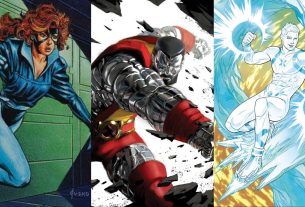Kurt Vonnegut is one of the most beloved authors of the 20th century, and for good reason. It’s no wonder that his works have been sought after for adaptation, including Butch Cassidy and the Sundance Kid and The Sting. Put the emphasis on “sought after,” because not many of his novels or short stories have actually made it to the big screen. Vonnegut’s stories are often sarcastic, time-hopping, told from the first person, and uniquely bleak… but also hilarious. His specifically strange brand of sci-fi, comedy, and satire has long been a tough cookie to crumble over onto film. Cat’s Cradle is one of the flagship novels in his bibliography, unabashedly representing all of these attributes in ways that make it one of the most “Vonnegut” novels there is. It’s an odd choice on Hollywood’s part to adapt, not only in a business sense, but because it also feels like one of the remaining novels left that’s still unable to be adapted for the screen.
‘Cat’s Cradle’ Might Be Kurt Vonnegut’s Best Book
Cat’s Cradle is a 1963 postmodern satire, written by the late great Kurt Vonnegut. The film follows Felix Hoenikker and a group of scientists as they navigate life after the invention of ice-nine, a substance that could freeze the entire planet. The novel is bleakly comical, absurd, and hits some of its commentaries pretty hard on the nose, but it also has its moments of subtlety. That’s just how Vonnegut operates, though. He knows that he gets in his audience’s face with social and political commentary, but any time it’s on the nose, it’s to get a laugh. Cat’s Cradle is one of those Vonnegut books though. It’s like the even more well-known Slaughterhouse-Five in that it has actual statements that it’s trying to make. Kurt Vonnegut is a funny guy, but when he wants to make an actual point about something, he does so like a gut punch. There’s a reason that he’s largely considered one of the greatest authors of his time. It’s because he can do it all!
There’s a good argument to be made that Cat’s Cradle is Vonnegut’s best book. It’s a sprawling epic that manages to fit a ridiculous amount of subplots, ideas, and themes into one pretty tight story. When there’s this much going on, it’d probably be preferred if the book was able to breathe a bit more (it’s only a little over 300 pages) and let these ideas expand upon themselves more naturally. There’s a case to be made that this is where a format like a TV show could benefit the source material. That being said, that’s kind of its charm. Heavy subjects are brought up and briefly touched upon, usually with some degree of humor, then we move on to the next thing. It makes for a bit of a disorienting experience with how quickly we move from scene to scene, but that also adds to the framing device that the story is being told in flashback. It really does feel like you’re reading a memory.
What Is Kurt Vonnegut’s ‘Cat’s Cradle’ About?
Given Cat’s Cradle’s odd narrative structure, its tendency to jump from plot point to plot point, and oddball, Vonnegut-ian sense of humor, it’s not ideal to say that the book is unadaptable… but it just might need to stay on the page. It’s not the book’s high-concept ideas that would be tough for audiences to swallow, but it’s the way that the author delivers them. Cat’s Cradle is fun because of how little time we spend on the detrimental choices made and events leading toward the post-apocalyptic setting that our narrator is in. If a movie or TV show tried to recreate that, there would probably be too much filler added, and the story’s breakneck pace would ultimately become diluted.
The novel’s sense of humor also just likely wouldn’t translate well onto the screen. Not that the book is offensive or “couldn’t be made today” because of jokes that just didn’t age well. It’s just, you know, a Kurt Vonnegut novel! He makes light of things that are touchy subjects, like discussing what North American civilians were doing the day the atomic bomb was dropped on Hiroshima. This is done so in a way that comments on how unaware people can be of what their government is up to. (Either that or how they willingly turn a blind eye.) Other times, Vonnegut jokes around in the parameters of philosophy and religion. This is mostly explored through a fictional religion, Bokononism, a pretty hilarious concept that is participated in through extremely odd practices. For instance, boku-maru is an act of worship in Bokononism when two people press the exposed soles of their feet together for a long period of time. I don’t really know how you would get audiences on board with watching an adaptation of a novel that works so well because of how fast-paced it is, or how singular the author’s sense of humor is. This all just works best on the page.
Leonardo Dicaprio and Noah Hawley Want To Adapt ‘Cat’s Cradle’
There have been multiple attempts to bring Cat’s Cradle to both the big and small screens. Elements of the novel were adapted for the 1972 TV movie Between Time and Timbuktu, a project that pulled from several different Kurt Vonnegut stories. Leonardo DiCaprio‘s production company attempted to adapt the book into a movie back in 2005, but the film never moved past the writing stages. Most recently, co-creator of the FX series Fargo Noah Hawley attempted to adapt Cat’s Cradle as a limited series. Like DiCaprio’s attempt before him, Hawley’s series remains unmade.
It’s tough to choose which project would better do the novel justice, but it’s safe to assume that a film would probably encapsulate the book’s spirit best. Vonnegut’s book is only 300-ish pages, so there’s likely not a lot that would need to be trimmed down to properly bring the story to life. The movie would require a truly gifted editor to try and make the movie properly flow, but at least its fast pace would be true to Vonnegut’s work. As stated before, a TV show would just stretch the story out too much and it wouldn’t feel like Cat’s Cradle anymore. Sure, it’d carry over characters like Jonah the narrator and Felix Hoenikker, on-screen practices of Bokononism, and some pretty interesting ice-nine visuals, but the bloat of a TV show would suck all the fun out of it. Cat’s Cradle is the perfect novel for those looking to get Vonnegut’s trademark sense of humor and philosophy in rapid fire. There’s no need to not drag it out in 10 episodes over 10 hours. That being said, if someone did make this movie, please make it Yorgos Lanthimos!
Cat’s Cradle just might be Kurt Vonnegut’s best book, but that doesn’t mean it should also be adapted for film. Some novels can survive the process of being brought off the page and adapted to the screen, while others are successful narratives because of the medium that they reside in. We do need more adaptations of Kurt Vonnegut’s books (Deadeye Dick and Galápagos, please), but let’s also be real about which ones will work the best. It’s an easy answer, but a book that might be more feasible to adapt would be his most widely known work, Slaughterhouse-Five. It’s a similarly fast, heavy-handed, hilarious read, with an even more unconventional narrative structure, but it’s also a more cinematic book. Yeah, there was already a movie made in 1972, but let’s give that one another go, and if it’s successful, we can talk about making other Vonnegut movies. In the meantime, how about we leave Cat’s Cradle on the bookshelf? Is that too much to ask?
The Big Picture
- Kurt Vonnegut’s Cat’s Cradle is a beloved postmodern satire, but its unique blend of humor, social commentary, and oddball concepts may be difficult to adapt to the screen.
- The book’s fast-paced, episodic structure and Vonnegut’s distinct sense of humor may not translate well to a movie or TV show adaptation.
- While there have been attempts to adapt Cat’s Cradle, it may be best to leave it on the bookshelf and focus on adapting Vonnegut’s more cinematic works like Slaughterhouse-Five.





